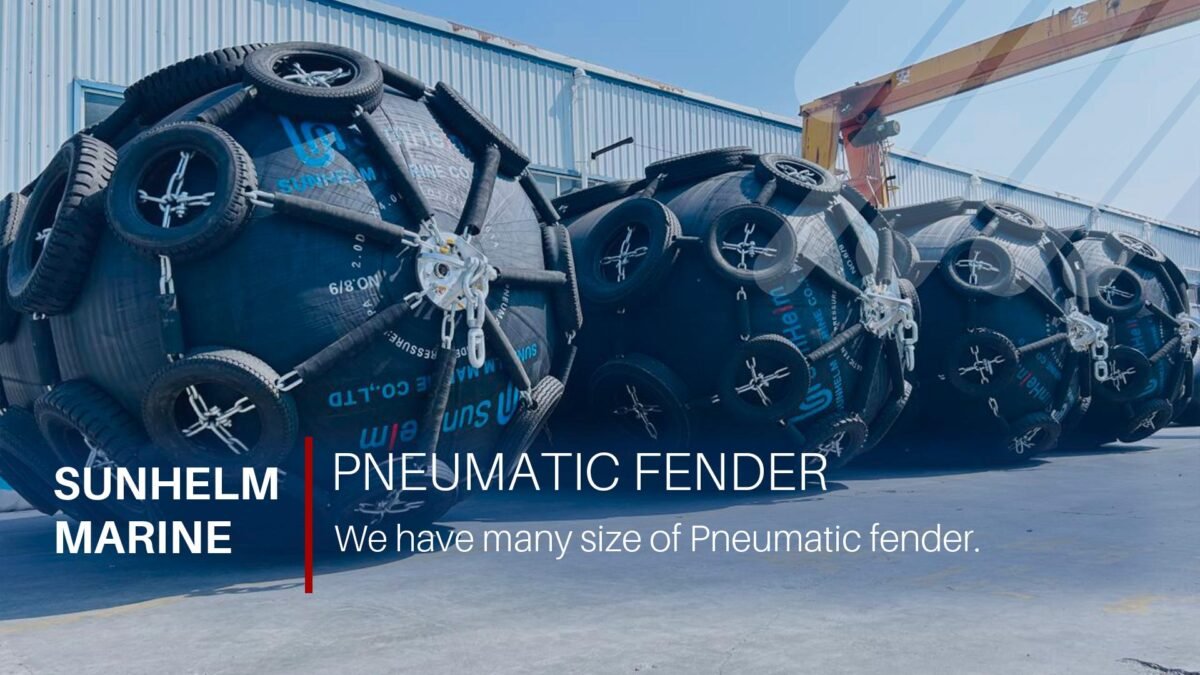As an important part of port and ship anti-collision equipment, the development prospects of pneumatic fenders (inflatable fenders) are affected by multiple factors such as the shipping industry, port construction, environmental protection requirements and technological progress. The following is an analysis of the key trends and prospects for the future development of pneumatic fenders:
1. Market demand continues to grow
Global shipping industry expansion: With the increase in international trade and shipping volume (especially port construction in emerging markets), the demand for ship berthing and loading and unloading has increased, and the demand for inflatable fenders as buffer protection equipment will grow simultaneously.
Upgrading of old ports: Many traditional ports are undergoing modernization and need more efficient and durable fender systems to replace traditional steel or rubber fenders. Inflatable fenders have become the first choice due to their lightweight and easy installation advantages.
Application of special ships: LNG ships, large container ships, etc. have higher requirements for fender performance, and the customized design of inflatable fenders (such as low temperature resistance and high pressure resistance) has great potential.
2. Technology upgrades drive product innovation
Material science progress: New polymer materials (such as high-strength fiber-reinforced rubber and polyurethane coatings) can improve the wear resistance, UV resistance and oil resistance of fenders and extend their service life.
Intelligent monitoring: Intelligent inflatable fenders with integrated pressure sensors and Internet of Things (IoT) technology can monitor air pressure and collision force in real time, and warn maintenance needs through data to reduce the risk of sudden failures.
Lightweight and modular design: Lighter structures are easier to transport and install, and modular designs can adapt to different ship types and dock conditions.
3. Environmental protection and sustainable development drive
Green Port Initiative: The International Maritime Organization (IMO) and environmental regulations of various countries have low-pollution requirements for port equipment. Inflatable fenders (especially those made of recyclable materials) are more environmentally friendly than traditional fenders.
Energy efficiency optimization: Inflatable fenders have high energy absorption efficiency, which can reduce energy consumption when ships are berthing, in line with the trend of low-carbon shipping.
Anti-pollution design: Technologies that prevent marine organisms from attaching to the surface of fenders (such as anti-fouling coatings) can reduce the impact on marine ecology.
4. Expansion of emerging application scenarios
Offshore wind power: The docking and maintenance of floating wind power platforms require fenders that are resistant to wind and waves.
Inland shipping and yacht docks: Small, low-cost inflatable fenders have potential in inland ports and leisure docks.
Military and emergency use: Military ports or temporary disaster emergency docks have a clear demand for rapidly deployed inflatable fenders.
5. Industry challenges and responses
High cost issues: The initial investment of high-end inflatable fenders is high, but customers can be convinced by long life and low maintenance costs.
Intensified market competition: The rise of Chinese and Southeast Asian manufacturers may lower prices, and companies need to maintain their advantages through technological differentiation (such as smart functions).
Standards and certification: The popularization of international standards (such as ISO 17357) will promote industry standardization and raise the threshold for product quality.
The overall outlook for the inflatable fender industry is optimistic, and it is expected to maintain an average annual growth rate of 5%-8% in the next 5-10 years.


